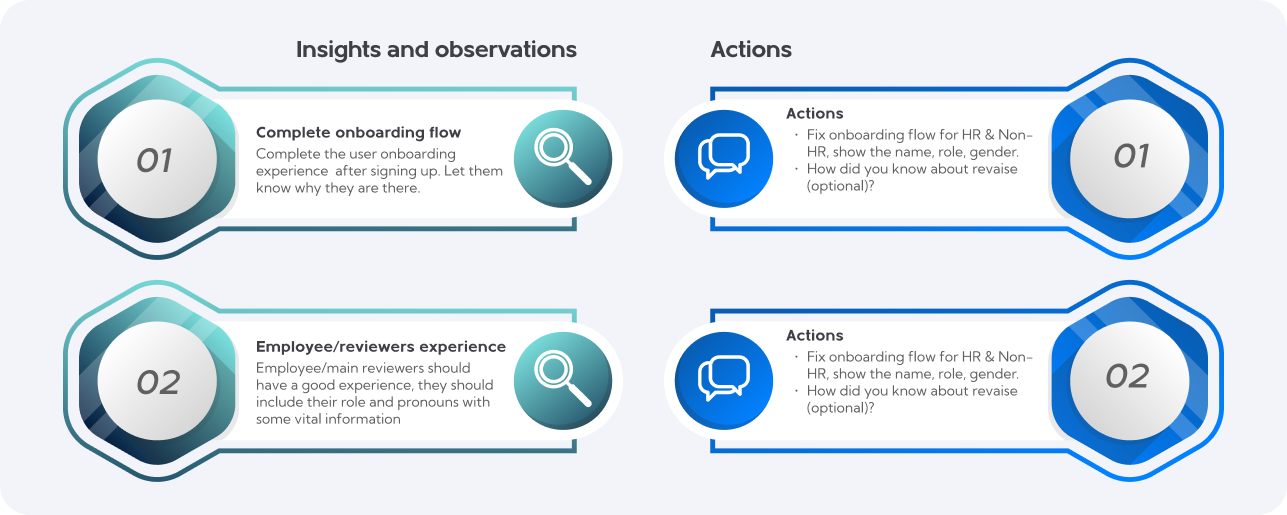Introduction
As a product designer, I have learned from experience that collecting feedback from users before launching a product is crucial. User testing can yield valuable insights into how users interact with the product and identify areas for improvement to enhance their overall experience.
In this article, we will examine the significance of user testing for reviewing products in the beta stage and offer practical suggestions for conducting effective user testing.
The Importance of User Testing
We cannot overemphasize how important user testing is. The user testing process is an essential part of the development process for any product, especially for Product A.
Thankfully, we had some fantastic users who agreed to test Revaise during its beta stage. From usability issues to pain points, then bugs and errors (some of which we missed, oops!), our users provided a wealth of information—think of it as getting a sneak peek into their minds, without the need for a shady psychic hotline.
With their feedback, we were able to identify critical issues that needed addressing, from pesky bugs to missing features. As a matter of fact, user testing was a game-changer for Revaise, and we can’t thank our users enough for being part of the journey. Their feedback will guide us in developing new features and improving the overall product experience.
And, who knows, maybe we’ll even send them some lovely swags as a token of our appreciation.
Tips for conducting effective user testing
Here are some practical tips for conducting effective user testing—what we did for Revaise.
-
Define testing goals: Before conducting user testing, we clearly defined our testing goals. The specific aspects of the product we want to test? What insights we were hoping to gain? This strategic approach enabled us to design a testing methodology and craft relevant questions that would yield valuable feedback from our users.
-
Recruit the Right Users: It’s essential to recruit users who are representative of our target audience. This is to ensure that we get feedback that is relevant and useful. To achieve this, we proactively engaged with HR professionals and a diverse pool of potential users.
-
Choose the Right Testing Method: There are many user testing methods you can use, such as surveys, interviews, or remote testing. For Revaise, we could not afford to inconvenience our users. In the beta stage, we needed a cost-effective, flexible, and convenient method that can also allow us to test with participants from a wider geographic area in a timely and efficient manner. Remote user testing was the best fit based on these criteria. We evaluated the ease of use and overall user experience of Revaise by testing it with representative users.
-
Set up the Testing Environment: Make sure you have the right equipment and software to conduct the testing. You should also prepare a comfortable and quiet testing environment to help users feel at ease. For Revaise, before the remote user testing session, we informed the participants via email about the purpose and expectations of the session, as well as their consent, technology requirements, time commitment, and confidentiality.
We also reiterated this information when they joined the call before we asked them to share their screens with us to navigate the product. By doing this, we ensured that participants were fully informed and prepared for the testing session, which helped to facilitate a smooth and successful testing experience.
After conducting the evaluation test, analyzing the feedback and identifying the most critical issues that need to be addressed. Make changes to the product based on the feedback and conduct additional testing to ensure that the changes have improved the user experience.

Conclusion
The significance of user testing results cannot be overstated as they are crucial for ensuring that Product A meets the needs and expectations of its intended audience, which ultimately determines its success in the market. In the next episode of this series, I’ll be sharing the details of the user testing conducted and how we leveraged these insights to optimize the product for enhanced user satisfaction.
